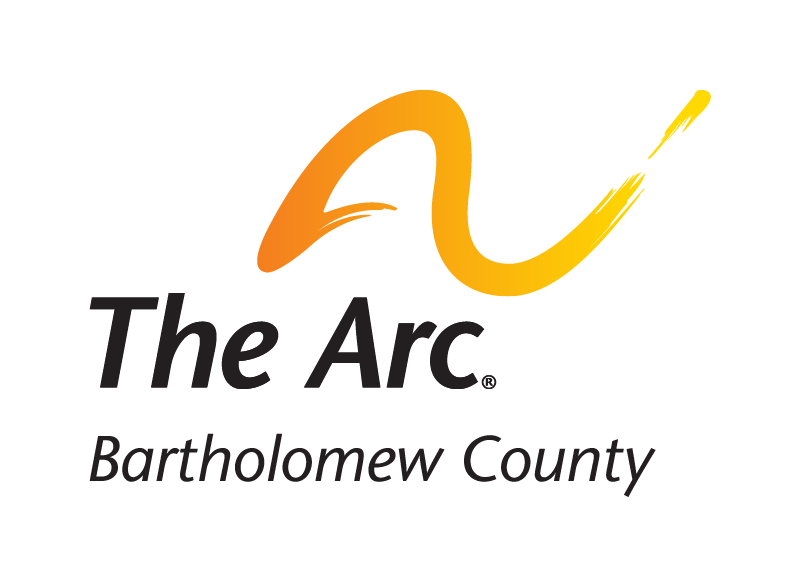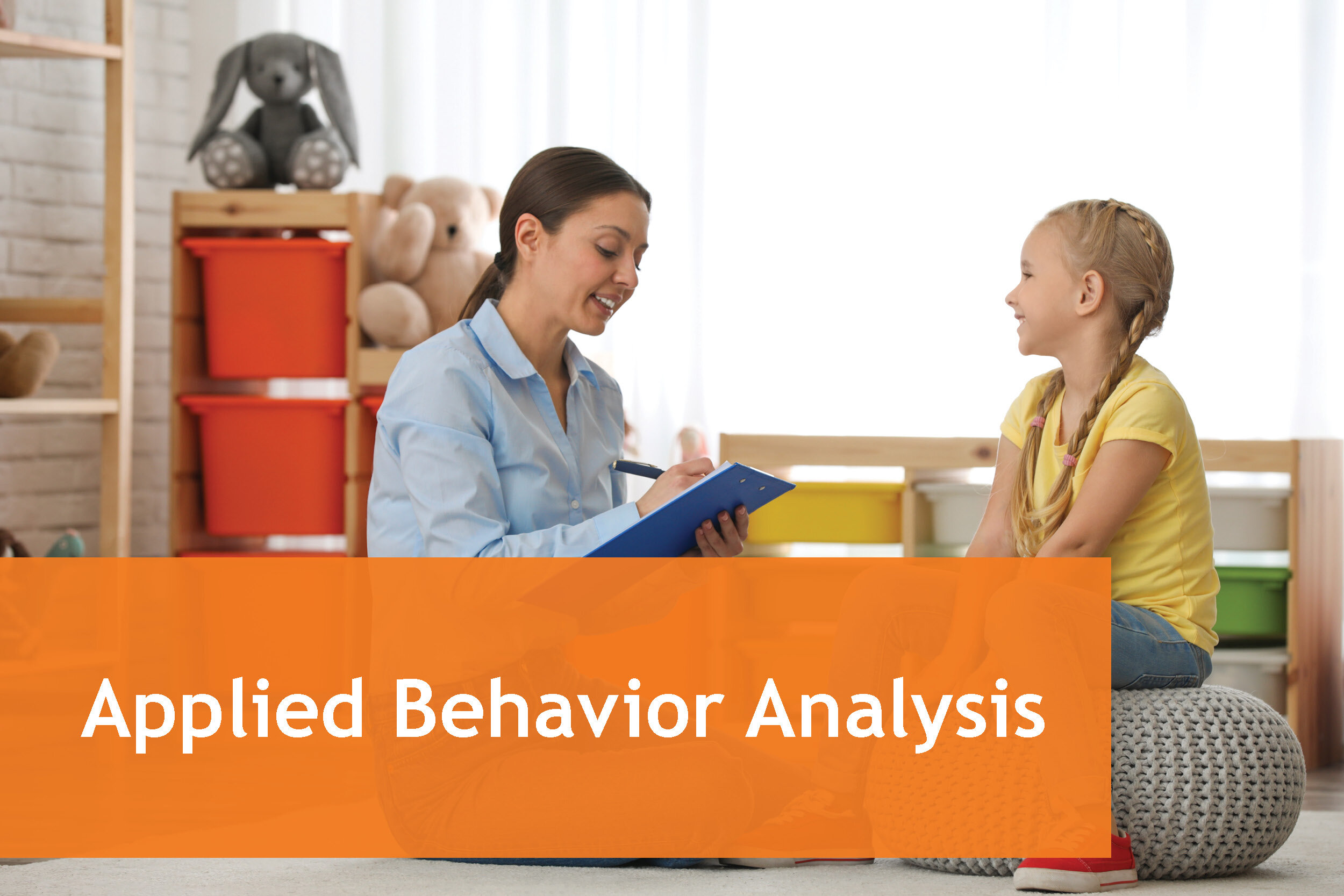Applied Behavior Analysis (ABA)
Applied Behavior Analysis uses evidence-based strategies to increase appropriate behavior and reduce less-appropriate behavior.
Quick Links
What is Applied Behavior Analysis?
"Applied Behavior Analysis (ABA) is a science devoted to the understanding and improvement of human behavior” (Cooper, Heron, & Heward, 2007). Founded on the principles of behavior analysis, ABA takes evidence-based interventions from experimental analysis of behavior and applies them to improve human behavior.
ABA analyzes the environmental and social factors that contribute to human’s behavior and learning. By analyzing the functions of behavior, (the “why”), behavior analysts are able to modify behaviors by providing more appropriate, alternative behaviors to help with behavioral issues or to assist with learning methods.
Founded on empirical research and driven by data analysis, the interventions chosen by a Behavior Analyst are focused on efficacy and scientifically proven results. Consistent data analysis allows behavior analysts to verify they have chosen an effective intervention for their clients and for any necessary modification of the intervention along the way.
Applied Behavior Analysis places a heavy emphasis on ethical treatment of clients through its Professional and Ethical Compliance Code.
Who can benefit from ABA?
While most often utilized as a treatment to autism spectrum disorders and developmental disabilities, Applied Behavior Analysis can be used in a wide variety of settings and populations. ABA’s scope stretches into subbranches such as Organizational Behavior Management, which promotes healthy work environments in large corporations by working on maintaining and reinforcing staff and achieving goals. ABA has also been effective in school settings, with animal training, and for forensics.
ABA is also effective for people of all ages. It can be used with children as young as early adolescents all the way through adulthood.
What skills can be improved through ABA?
Applied Behavior Analysis (ABA) was created to assist with “socially-significant” behaviors (Baer, Wolf, & Risley, 1968) that can improve people’s lives. This means the behaviors and skills chosen for modification should be deemed important by the client and/or their families.
Programming selection is individualized for each person. Every learner’s skill sets and goals vary and the programming selected should be as such, addressing the needs of each individual.
There are a variety of skills that can be benefited by ABA. The list below serves as a non-exhaustive overview:
Communication
Functional Communication Training (FCT) focuses on providing a client with a functional way to communicate wants and needs and to engage with their environments.
The form of functional communication can vary for each individual
Some clients may be successful with communicating via vocal speech while others may utilize Sign Language, Picture Exchange Communication Systems (PECS), or Alternative and Augmentative Communication (AAC) devices such as text-to-speech or image-to-speech systems.
While the modality may vary, the primary goal of communication training is to provide each individual with a functional way to communicate and engage with others.
Social & Play Skills
Social & play skills focus on promoting initiation of and response to social requests from peers, carrying conversations during social engagements, and engaging in age-appropriate or less-restrictive play.
Daily Living Skills
ABA is heavily focused on increasing the independence of the client. By working on daily living skills such as toothbrushing, hand washing, toilet training, dressing, and common household tasks, ABA can promote independent living for adolescents and adults.
Gross & Fine Motor
Gross and fine motor movements can also assist with proprioceptive and spatial awareness, the understanding of the body as it relates to space. By working on major and minor muscle group movements, tasks such as dressing oneself or writing with a utensil can be improved.
Imitation
Humans engage in imitation every day. By observing the behavior of those around us we learn new ways to engage with our environments. ABA uses imitation, whether through in-vivo modeling, peer modeling, or video modeling, to allow learners to see and imitate behaviors.
Listener Responding
Receptive listening skills can assist with following directions, receptively identifying and locating items in arrays or the natural environment, and understanding stimuli as they relate to feature, functions, and classes.
Visual Perception
Working on skills such as matching of identical and non-identical items, solving puzzles, and sorting and completing patterns, visual-perception programming helps learners with visual awareness of stimuli.
Classroom & Group Skills
While focusing on transitioning learners into a less-restrictive learning environment (such as school), skills such as attending to a group instructor, sitting appropriately, and participating in group activities and instruction for durations of time may be targeted.
Behaviors
This is the primary function of Applied “Behavior” Analysis. ABA modifies behaviors. ABA can increase appropriate behaviors while decreasing less-appropriate behaviors.
Behavior Modification
Behavior Modification looks at the environmental and social factors that precede and follow a behavior and the function of behavior. By modifying an element, the analyst decides which component change will lead to the desired behavior change.
A-B-C’s of Behavior
Behavior analysts look at the “A-B-C’s” of behavior through data collection.
The “A”, antecedent, is what happened prior to the behavior. This can include the setting, time of day, people involved, and prior events that may impact the behavior.
The “B”, behavior, is a descriptive definition of what behavior occurred. Analysts look at measurement criteria such as frequency, duration, and magnitude of the behavior.
The “C”, consequence, is what happens immediately following the behavior. Was the behavior reinforced (addition of a reinforcing stimuli)? Or was the behavior punished (removal of a reinforcing stimuli)?
By looking at the “book-ends” of behavior, analysts can hypothesize the function of the behavior and whether the environment or social factors in the learner’s life are impacting the behavior.
Once a behavior has been chosen for modification, analysts will begin to modify the antecedents and consequences surrounding that behavior.
Antecedent Strategies
Antecedent strategies aim to change the environment and stimuli that occur before a behavior. Examples of antecedent strategies to modify behavior are:
First/Then Statements: This prepares the learner for the need to complete a task before accessing reinforcement.
Example: “First clean up your room, then you can play with trains”
Visual Schedules: Visual schedules help promote smoother transitions between activities throughout a learner’s day. By being able to see what is coming up next, the learner will be less surprised by the transition
Countdowns from Reinforcement: Providing a learner with a countdown to the end of a fun activity (such as playing at the park) can reduce less-appropriate behaviors during transitioning away from the activity
Social Stories: Written from the perspective of the learner, these stories review the desired behavior in social situations and are reviewed prior the learner being in the environment to help prepare them for the situation.
Sensory Breaks: For learners with sensory processing disorders, providing periodic sensory breaks can prevent overstimulation and help promote learning opportunities.
Consequence Strategies
Consequence strategies aim to change the environment and stimuli that follow a behavior’s occurrence. Examples of consequence strategies to modify behavior are:
Positive Reinforcement: The backbone to Applied Behavior Analysis, positive reinforcement is providing a learner with a reinforcing stimulus each time the desired behavior occurs. The addition of the reinforcing item/praise increases the chances of that behavior being produced again.
Negative Reinforcement: The removal of aversive stimuli, such as receiving a break from a difficult test.
Differential Reinforcement: Differential Reinforcement focuses on finding an alternative behavior to replace a less-appropriate behavior. The newly selected behavior is then reinforced each time it occurs.
Punishment: The removal or withholding of reinforcing items and/or the addition of a non-reinforcing stimuli. These can include strategies such as taking a time-out from reinforcing activities, the use of a response-cost such as losing a token in a token economy, or the use of overcorrection, such as having a learner pick up the environment after a destructive tantrum.
Functions of Behavior
There are 4 primary functions of behavior that help us understand the “why” behind all human behaviors. These functions include:
Access to reinforcing items/activities
Escape or Avoidance from aversive items/activities
Attention from other people
Automatic or Self-Stimulatory behaviors that are inherently reinforcing
Examples of behaviors for each function:
Access: A learner asks, “Can I have a cookie?”
Escape/Avoidance: A learner covers their ears when a firetruck drives by.
Attention: A learner calls for their parent from the other room
Automatic/Self-Stimulatory: A learner taps their foot during a test or flaps their hands while watching their favorite movie scene
Once a behavior analyst has hypothesized the function of a targeted behavior, they must find an appropriate replacement behavior that will fulfill the same function. The new, more appropriate behavior will be reinforced while the other behavior will be put on extinction, where it will no longer receive reinforcement.
Discrete Trial Training & Natural Environment Teaching
Applied Behavior Analysis can be taught in many different environments. While some learners may benefit from a more structured learning format, others may prefer to learn in a more naturalistic, free-play approach.
Discrete Trial Training (DTT) utilizes a structured approach to learning. The learner is presented with a stimuli (an instruction), they respond to the stimulus (behavior), and then are either reinforced or punished* for their response. *(punishment = reinforcement withheld)
Here is an example:
Therapist holds up a picture of a cat and asks, “What is this?”. The learner responds, “cat”. The therapist replies, “That is a cat! Great job!” and provides the learner with a fruit snack.
An example with a punished response would be:
Therapist holds up a picture of a cat and asks, “What is this?”. The learner responds, “dog”. The therapist withholds reinforcement.
The therapist then restates the instruction, prompts the correct response “cat”, and then provides the child with reinforcement. This helps the child pair the correct response to the question with receiving reinforcement.
Natural Environment Teaching (NET) allows the learner to learn in a less-structured way. While the learner explores the environment, the therapist will engage in learning opportunities found organically through the child’s lead during play.
Here is an example:
The learner and therapist are playing at the park. The learner walks over to the swing and sits down. The therapist prompts the learner to ask for a “push”. The learner says, “push” and receives a big push from the therapist. The learner has now associated the word “push” to the swing in the natural environment.
Parent Involvement & Training
Parent involvement and training can significantly increase generalization of the learner’s skills into the home and other significant environments. Behavior analysts can assist parents with understanding the function of their own child’s behaviors and offer training on the interventions and strategies being utilized during therapy sessions.
Who Can Provide ABA?
Applied Behavior Analysis is often rendered by a Registered Behavior Technician under the direction and supervision of a Board-Certified Behavior Analyst. The Board-Certified Behavior Analyst selects programming, creates the behavior intervention plan, and oversees and trains the Technician on the learner’s programming.
The Registered Behavior Technician must receive supervision from a Board-Certified Behavior Analyst during therapy with a client for at least 5% of their direct therapy hours. This ensures treatment fidelity and allows the Behavior Analyst to analyze the progress toward learner’s goals.
To learn more about each provider’s role visit: https://www.bacb.com
Treatment Coverage
Applied Behavior Analysis (ABA) is often covered by private insurance companies if deemed medically necessary. States offering the Medicaid Waiver may have additional financial supports in place. For more information, contact your insurance provider or explore more about the Medicaid Waiver in the state of Indiana.
References
Autism Speaks. (n.d.). Applied behavior analysis (aba). Autism Speaks. https://www.autismspeaks.org/applied-behavior-analysis.
BACB. Behavior Analyst Certification Board. (n.d.). https://www.bacb.com/.
Baer, D. M., Wolf, M. M., & Risley, T. R. (1968). Some current dimensions of applied behavior analysis. Journal of applied behavior analysis, 1(1), 91–97. https://doi.org/10.1901/jaba.1968.1-91
Behavior Analyst Certification Board. (2020). Ethics code for behavior analysts. Littleton, CO: Author
Cooper, J. O., Heron, T. E., & Heward, W. L. (2007). Applied behavior analysis (2nd ed.). Columbus, OH: Merrill Prentice Hall.

